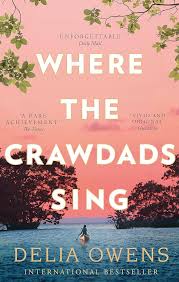51. Waning Moon
byWaning Moon, Chapter 51, invites readers into the emotional and complex world of Kya, where the courtroom becomes a symbolic arena that mirrors the natural world she knows so well. Set in 1970, the chapter artfully compares the behaviors and social dynamics of the courtroom with those observed in the wild, offering a fresh perspective on the legal proceedings unfolding before Kya. As she watches the trial, Kya draws parallels between the individuals present and the animals that inhabit the marshland she has grown up in. The judge, exuding authority and command, is likened to an “alpha male,” evoking the presence of a territorial boar in his ability to maintain control over the room. Tom Milton, Kya’s defense attorney, embodies the power and confidence of a buck, asserting his place as a strong, reliable figure in the courtroom. In stark contrast, the prosecutor, with his brightly colored attire and aggressive demeanor, takes on the role of a lesser male, one who feels the need to draw attention to himself through loud gestures and statements. The bailiff, marked by his intimidating accessories, is depicted as the lowest-ranking male, relying on outward displays of dominance to bolster his position in the social hierarchy.
As the trial progresses, the prosecutor calls forth his next witness, Hal Miller, a significant figure whose testimony further complicates the case. Miller, along with another individual, claims to have seen Kya—referred to as Miz Clark—navigating her boat towards a secluded cove near a fire tower in the early hours of October 30, 1969, adding a crucial layer to the prosecution’s case. This piece of evidence is crucial because it potentially places Kya in a location close to the crime scene, raising doubts about her involvement in the murder. The courtroom fills with tension as Miller’s account draws attention, adding to the ever-growing sense of unease that hangs over Kya’s fate. Despite the intense atmosphere created by the prosecutor’s attempts to sway the jury, there is an unexpected moment of solace. Sunday Justice, a cat who has become a symbol of impartiality, quietly approaches Kya, offering a rare, comforting presence in the midst of the trial’s emotional turmoil. This simple, almost unnoticed act provides Kya with a moment of emotional respite, a reminder of the gentler aspects of life outside the confines of the courtroom’s harsh scrutiny.
The narrative in this chapter does more than just move the plot along—it serves as a rich metaphor for the struggles Kya faces both in the courtroom and in the world beyond. The stark contrast between the prosecution’s emotional, judgment-laden approach and the defense’s calm, reasoned argument underscores the deep divisions within the town and the biases that Kya must contend with. Kya, through her observation of the individuals in the courtroom, draws a powerful parallel between the courtroom drama and the animal kingdom. The behaviors of those around her reflect the same territorial instincts and survival mechanisms she has witnessed in the marsh. The prosecutor’s aggressive tactics, the judge’s commanding presence, and Tom’s protective stance evoke the survival of the fittest, where power, control, and influence often determine the outcome. This courtroom, though a human construct, feels deeply primal to Kya, who has spent her life in the wilderness, observing creatures and people alike navigating their complex hierarchies.
Kya’s reflection on the nature of the people around her, their motivations and actions, invites the reader to consider the deeper themes of community, isolation, and survival. The trial, while a legal process, also mirrors Kya’s personal battle for acceptance and justice. The courtroom becomes a microcosm of the larger societal forces that have shaped her life, from the biases and prejudices of the townspeople to the ingrained mistrust of her isolated existence in the marsh. Throughout the chapter, the contrast between the world Kya knows and the one she is now forced to navigate becomes more pronounced. The people in the courtroom, with their complex social structures and ingrained prejudices, seem alien to Kya, whose life has been shaped by the simplicity and beauty of the natural world. Yet, as the trial progresses, it becomes clear that the dynamics at play in the courtroom are not so different from the instincts she has observed in the creatures of the marsh. Both worlds are governed by power, survival, and the struggle for belonging, and Kya’s battle for justice is deeply intertwined with her struggle to find her place in a world that has always viewed her as an outsider.
In conclusion, this chapter not only advances the trial but also serves as a powerful reflection on Kya’s life in the wild and the societal forces that have shaped her identity. As Kya navigates the intricacies of the courtroom, her observations remind readers that the fight for justice is not just about legalities, but about the deeper human instincts of survival, power, and acceptance. Through the courtroom’s power struggles, Kya is faced with the harsh realities of the biases and prejudices that have long defined her existence. The way she watches and interprets these dynamics, while struggling with her own feelings of alienation, offers a poignant commentary on the universal themes of belonging, survival, and the quest for fairness in an often unjust world. The courtroom, like the marsh, is a space where Kya’s resilience and fight for justice are tested, and it is here that her fate will be determined, not just by the evidence, but by the biases and perceptions of those who hold the power to judge her.


